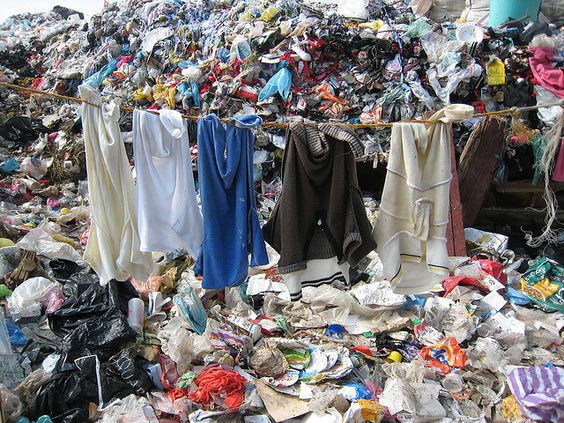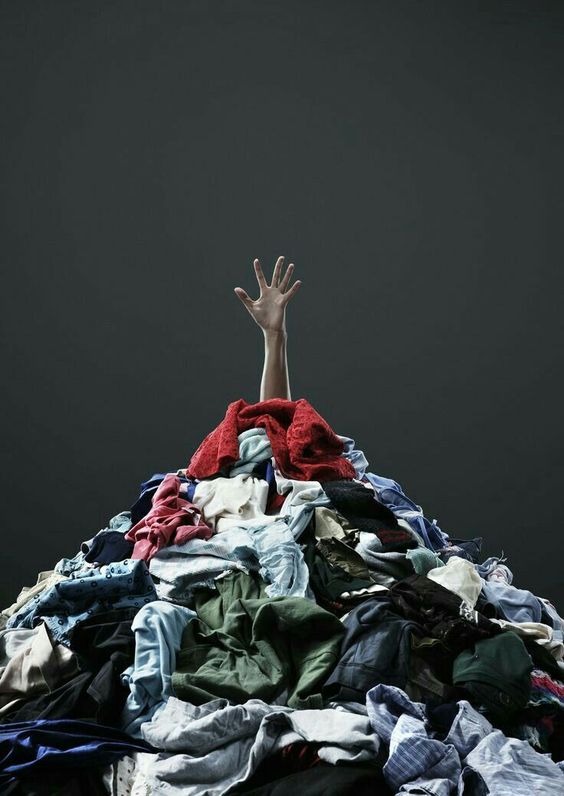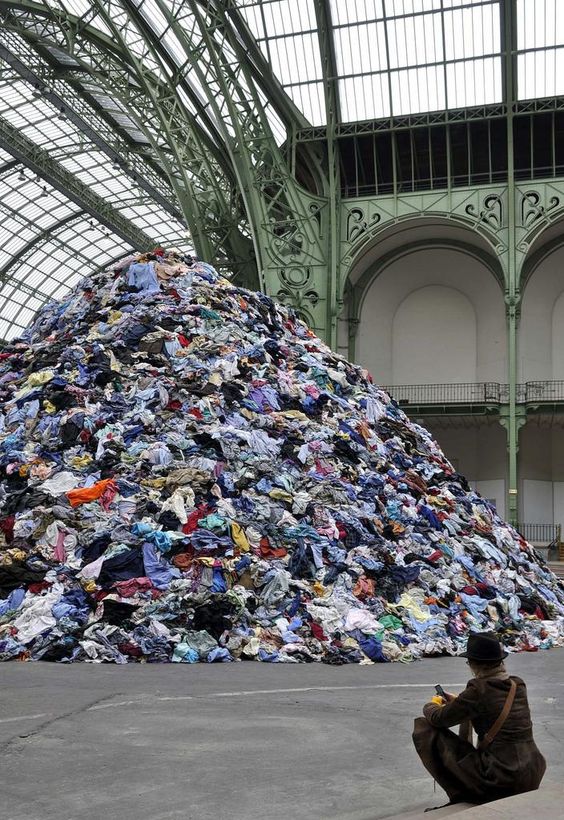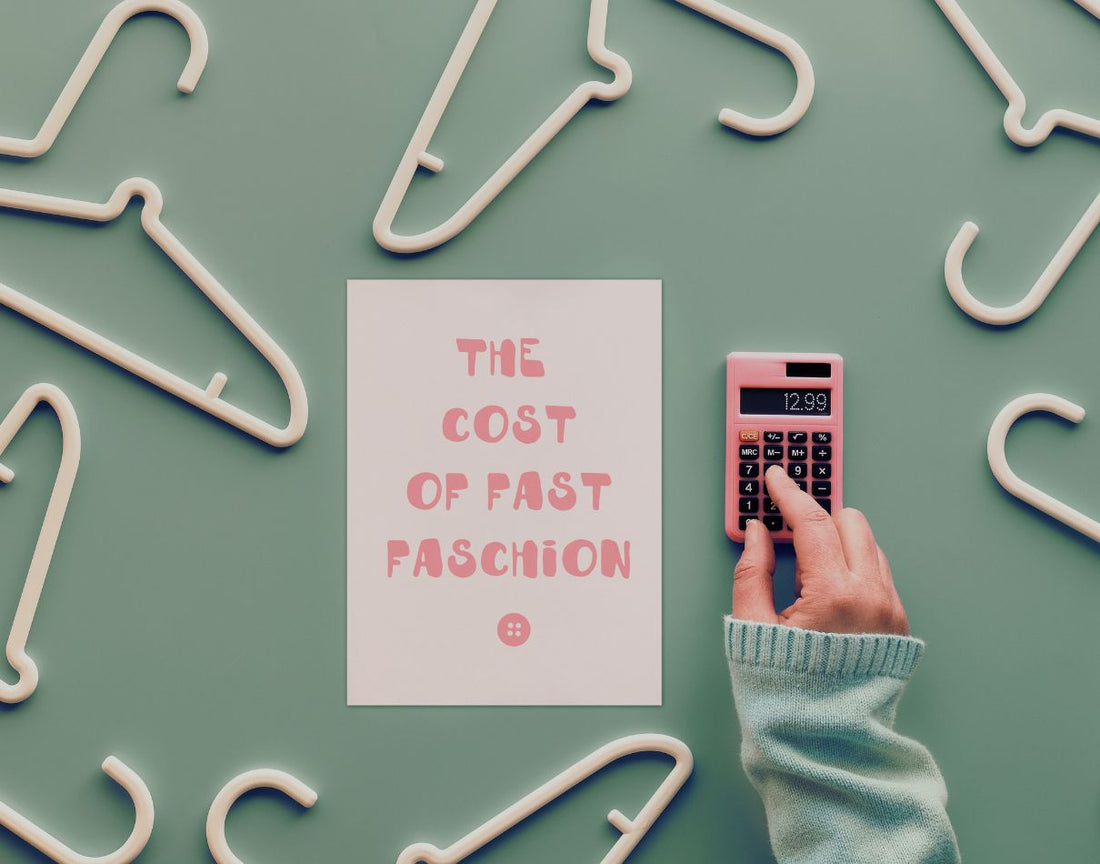Shopping for clothes used to be an occasional event - something that happened a few times a year,
when the seasons changed or when we outgrew what we had.
But about 20 years ago, something changed . Clothes became cheaper, trend cycles accelerated and shopping became our hobby . But what is fast fashion? Why is fast fashion so bad? And how exactly does it affect people, the planet and animals? It was almost too good to be true. All the big box stores sell cool, trendy clothes that you can buy without breaking the bank. Bring it out a few times and then throw it away. Suddenly everyone could afford to dress like their favorite celebrity or wear the latest trends copied from the catwalk.
Then in 2013, the world faced reality when the Rana Plaza garment manufacturing complex in Bangladesh collapsed, killing more than 1,000 workers .
That's when consumers really started questioning fast fashion and wondering about the true value of these $5 t-shirts. If you're reading this article, you may already be aware of the dark side of fast fashion, but it's worth exploring.
how the industry got to this point – and how we can help change it.

What is fast fashion?
Fast fashion can be defined as cheap, trendy clothing that takes ideas from the catwalk or celebrity culture and transforms them into clothing in high street stores at breakneck speed to meet consumer demand. The goal is to get the latest styles to market as quickly as possible so that customers can buy them while they're still at the height of their popularity, and then unfortunately throw them away after a few wears . It contributes to the idea that repeating clothes is a fashion faux pas and that if you want to stay trendy you have to have the latest look as it's being worn. It forms a key part of the toxic system of overproduction and consumption that makes fashion one of the world's biggest polluters . Before we get down to changing it, let's take a look at the history.
How did fast fashion come about?
To understand how quickly fashion came about, we need to go back a bit.
Before 1800, fashion was slow . You had to source your own materials like wool or leather, prepare them, weave them and then make the clothes.
The Industrial Revolution introduced new technologies – like the sewing machine .
The production of clothes has become easier, faster and cheaper. Clothing workshops were established to satisfy the middle classes. Many of these tailor shops were used by teams of garment workers or domestic workers. At this time, factories appeared along with some known security issues. The first major garment factory disaster was when a fire broke out in New York's Triangle Shirtwaist Factory in 1911. It claimed the lives of 146 workers, many of whom were young immigrant women .
In the 1960s and 1970s, young people created new trends and clothing became a form of personal expression, but there was still a difference between high fashion and high street.
In the late 1990s and 2000s, low-cost fashion reached its peak.
Online shopping took off and fast fashion retailers such as H&M, Zara and Topshop took over the mainstream market. These brands took looks and design elements from top fashion houses and reproduced them quickly and cheaply. With everyone now able to shop for trendy clothes whenever they want, it's easy to see how this phenomenon has caught on.

How to recognize a fast fashion brand
Some key factors are common to fast fashion brands:
- Thousands of styles that touch all the latest trends.
- The extremely short time between when a trend or garment is spotted on the catwalk or in celebrity media and when it hits the shelves.
- Offshore production, where labor is cheapest, using low-wage workers without adequate rights or security.
- Limited quantities of a particular garment - this is the idea promoted by Zara. With new stock coming into the store every few days, customers know that if they don't buy something they like, they're likely to miss out.
- Cheap, low-quality materials like polyester cause clothes to deteriorate and be thrown away after a few wears – not to mention the problem of getting rid of microfiber.
Why is fast fashion bad?
Pollution of our planet
The impact of fast fashion on the planet is huge . The pressure to reduce costs and speed up production dates means that environmental aspects are more likely to be reduced. The negative impact of fast fashion includes the use of cheap, toxic textile dyes – making the fashion industry one of the biggest polluters of clean water in the world, next to agriculture.
This is why Greenpeace has over the years pressured brands to remove dangerous chemicals from their supply chains through their detox fashion campaigns. Cheap textiles also increase the impact of fast fashion. Polyester is one of the most popular fabrics. Derived from fossil fuels, it contributes to global warming and can release microfibers that increase the amount of plastic in our oceans when washed.
But even "natural" fabrics can be a problem for fast fashion. Conventional cotton requires huge amounts of water and pesticides in developing countries. This results in drought risks and creates extreme pressure on water reservoirs and competition for resources between companies and local communities. The constant speed and demand means increased pressure on other areas of the environment, such as land clearing, biodiversity and soil quality . Leather processing also has an impact on the environment, as 300 kg of chemicals are added for every 900 kg of animal hides processed.
The speed at which clothing is produced also means that consumers are disposing of more and more clothing, creating massive textile waste. According to some statistics , more than 500 million kilos of unwanted clothes end up in landfills in Australia alone every year.
Exploitation of workers
In addition to the environmental impacts of fast fashion, there are also human impacts.
Fast fashion affects farmers, workers who work in dangerous environments, for low wages and without basic human rights .
Further down the supply chain , farmers may be working with toxic chemicals and brutal practices that can have a devastating impact on their physical and mental health , an unfortunate situation highlighted in the documentary "The True Cost".
Harming animals
Fast fashion also affects animals. In the wild, toxic dyes and microfibers released into waterways are taken up by land and marine life alike through the food chain with devastating effect.
And when animal products such as leather, fur and even wool are used directly in fashion, animal welfare is threatened.
For example , numerous scandals reveal that real fur, including cat and dog fur, is often passed off as faux fur by unsuspecting shoppers.
The truth is that fur farms produce so much real fur under horrible conditions that it is cheaper to produce and buy than faux fur.
Consumer pressure
Finally, fast fashion can affect consumers themselves and encourage a "throw-away" culture due to both the built-in obsolescence of products and the speed with which trends emerge.
Fast fashion makes us believe that we have to buy more and more to stay on top of trends, which creates a constant feeling of need and maximum dissatisfaction. The trend has also been criticized on intellectual property grounds, with some designers claiming that retailers were illegally mass-producing their designs.

Who are the big players?
Many of the retailers we know today as big players in fast fashion, such as Zara or H&M, started out as smaller stores in Europe around the 1950s. Technically, H&M is the oldest of the fast fashion giants, opening as Hennes in Sweden in 1947, expanding to London in 1976, and before long in the States in 2000.
It is followed by Zara, which opened its first store in northern Spain in 1975.
When Zara landed in New York in the early 1990s, people first heard the term 'fast fashion'.
It was created by the New York Times to describe Zara's mission to take just 15 days for a garment to go from the design stage to being sold in stores.
Other big names in today's fast fashion include GAP, Primark and TopShop .
While these brands were once considered radically cheap distributors, there are now even cheaper and faster alternatives
such as SHEIN, Missguided, Forever 21, Zaful, Boohoo and Fashion Nova . These brands are known as ultra fast fashion,
a recent phenomenon that is as bad as it sounds.
Is fast fashion getting the green light?
As more and more consumers report the true costs of the fashion industry,
and fast fashion in particular, we are witnessing a growing number of retailers implementing so-called sustainable and ethical fashion initiatives .
such as in-store recycling systems . These schemes allow customers to drop unwanted items into 'bins'
in brand stores. However, it was highlighted that only 0.1% of all clothing collected by charities
and take-back programs are recycled into new textile fibers.
The fundamental problem with fast fashion is the speed at which it is produced, which puts enormous pressure on people and the environment.
Recycling and small lines of organic or vegan clothing - unless they are only for greenwashing - are not enough to counter the culture of throwaways, waste, strain on natural resources and countless other problems caused by fast fashion. The whole system needs to be changed.
Is fast fashion on the decline?
We are starting to see some changes in the fashion industry .
The anniversary of the Rana Plaza collapse is now Fashion Revolution Week, with people around the world asking questions like:
“Who made my clothes? and "What's in my clothes?"
Fashion Revolution declares that "we don't want our clothes to exploit people or destroy our planet".
Millennials and Gen Zers—the drivers of the future economy—may not have caught the fast fashion bug.
Some argued that this generation "grew up too smart for the mindless consumerism that forces manufacturers to become more ethical, inclusive and liberal".
However, ultra fast fashion brands like SHEIN are selling more than ever and these young shoppers are their target market.
There is also growing interest in moving towards a more circular model of textile production, reusing materials wherever and whenever possible.
In 2018, both Vogue Australia and Elle UK devoted entire magazine issues to sustainable fashion, a trend that is being embraced by more and more big names every year.

What can we do?
We love this quote from British designer Vivienne Westwood,
"buy less, choose well, make it last"
Buying less is the first step – try to fall back in love with the clothes you already own by styling them differently.
Why not turn those old jeans into some trendy hemless shorts or give that baggy old sweater a new lease of life by turning it into an exclusive piece that just about nobody has? Creating a capsule wardrobe is also worth considering on your ethical fashion journey.
Choose well - is the second step and choosing a high-quality garment made from eco-friendly fabric is essential here.
Making the right choice can also mean making a commitment to shop your wardrobe first, buy only secondhand, or support more sustainable brands.
Ultimately, we should hang on and look after our clothes by following care instructions, wearing them until they wear out, repairing them wherever possible, and then responsibly recycling them at the very end of their life.

